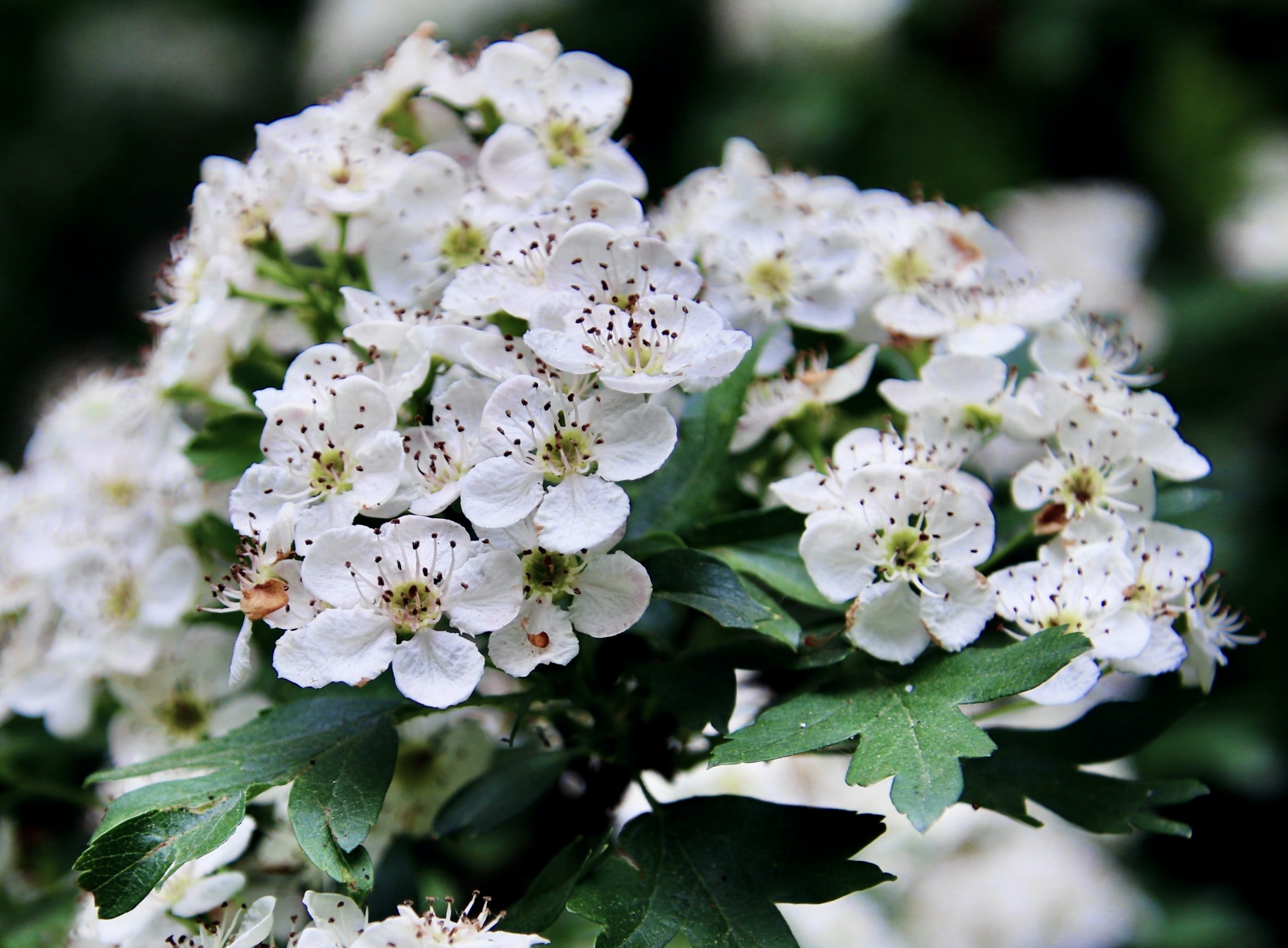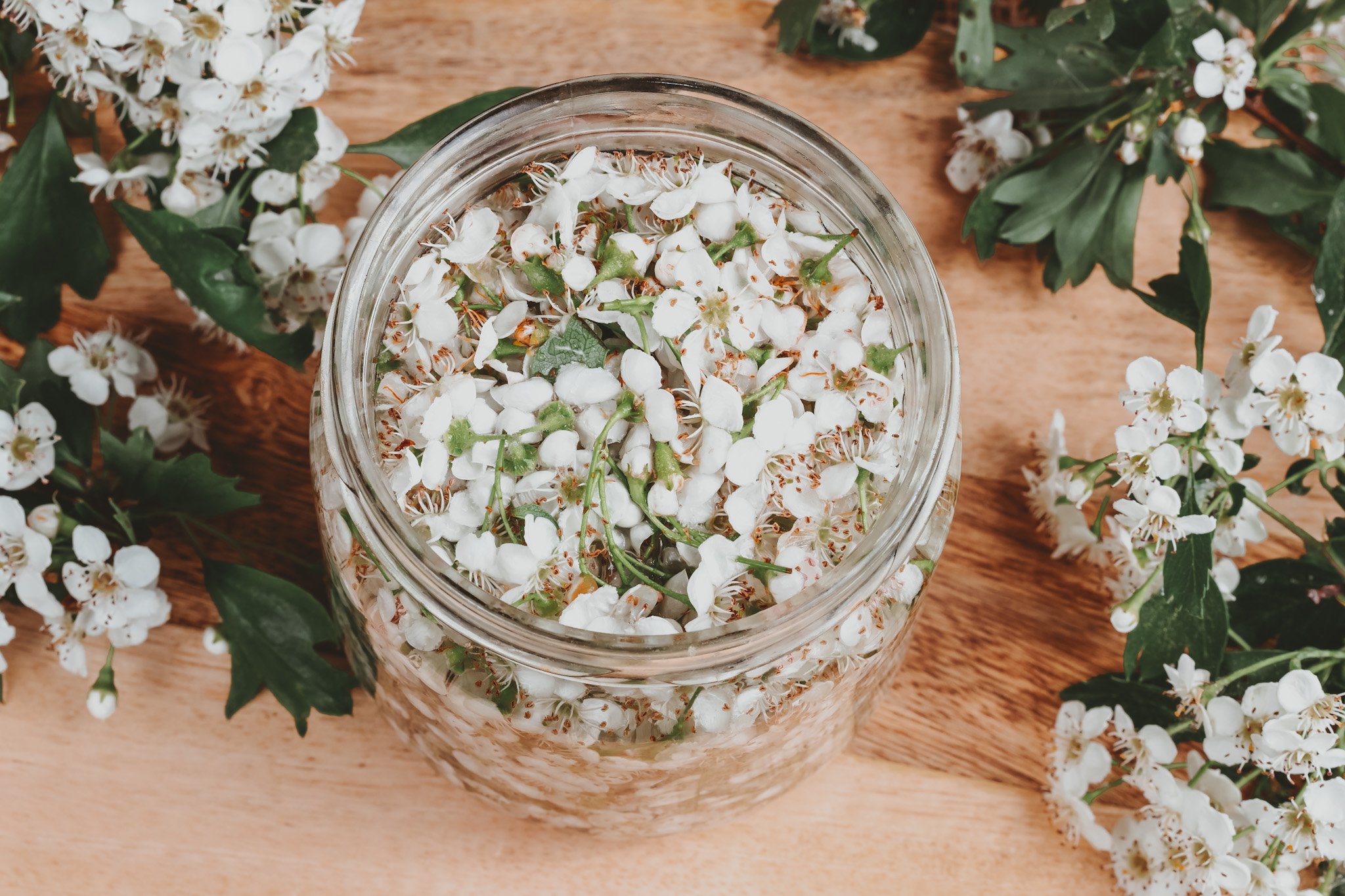Connecting to Beltane: The Medicine of Hawthorn Flowers
Throughout the northern hemisphere, “May Day” was traditionally celebrated by farmers to mark the beginning of Summer. In the Irish Sea region this was a fire celebration known as Beltane, ‘Bel’ for the celtic sun god and ‘teine’ meaning fire. This is when farmers would release their cattle on pasture land, sometimes passing them between two bonfires believing it would bring good health and fertility to the animals. The villagers would extinguish their old winter fire, come together in celebration, and relight their hearth with a flame brought back from the communal bonfire.
Modern day celebrations have taken on more of the germanic traditions focused on the may pole and fertility. The term ‘to go a may-ing’ is to sneak off with a special someone to make love somewhere in nature! Growing up my mother would make may flower bundles, gathering all of us in the car for delivery. It was our job to run to the front door of loved ones, hang the flowers from the door knob, ring the bell, and run as fast as we could! It was a day we looked forward to every year. I’ve continued this tradition with my own children! We begin our celebration on Beltane Eve with a bonfire and leave surprises of spring flowers and fairy cakes on the doorsteps of loved ones.
Traditionally the blooming of the Hawthorn Tree or ‘the may bush’ marked the beginning of Beltane. People would make flower crowns and decorate their homes with the branches of blooms. Long considered to be a magical tree, hawthorn is seen as a gateway between the human and spirit world. Beltane is recognized as a time when the veil between these two worlds is at its thinnest, meaning we can easily connect with our ancestors at this time. For these reasons it was often the gathering place for celebration. Before the may pole came to be, they would dance around the hawthorn and decorate it with gifts for the fae.
This is a deeply symbolic time of year for me as Hawthorn & Honey was born from my love of the hawthorn tree. My ancestry is rooted with this plant and its medicine is the heart of my business. My passion as a healer and caretaker is to help heal your heart. Whether it be an emotional, spiritual, or physical affliction. I begin making our signature Hawthorn Elixir on Beltane gathering the hawthorn flowers, adding wild rose in June, motherwort in July/August, rosehips in September, and finish by gathering hawthorn berries on Samhain. As I gather, the plants are added to huge jars filled with brandy and honey. Once the hawthorn berries are added the blend is complete and the jars are placed in a dark corner of my root cellar until the following Spring.
Hawthorn folklore has a rich history. Since the tree is known to house fairies there are many “rules” about when you can or cannot cut the branches. Beltane was considered by many to be the only day you could bring the branches into your home, any other day and your family was cursed for generations. Farmers supposedly planted hedgerows of hawthorn to protect their crops and animals from witches that rode their brooms along the rows. Others say the brooms of witches were made from hawthorn, so that would make the previous myth a moot point!
Gathering hawthorn flowers is a lovely way to celebrate Beltane. With the hawthorn tree being a link between ourselves and the spirit world, you’re not only gathering the medicine of the tree, your ancestors are there with you healing your heart from the other side. You see? This is hawthorn magic.
This is the perfect time to practice your plant communication. Sit down and let the tree ground you, give the fae/spirits time to feel your energy and look for a way to connect. If you’re looking to heal an old wound, focus on asking for help and allow yourself the space for letting go. Ask for permission to harvest the medicine of the tree and offer a gift in return. You can find information on how to do this in my Plant Communication ebook.
When gathering the flowers you’ll see that some of the stamen tips are pink and some are dark brown/black. The dark ones have been pollinated and the pink have not. Once a flower has been pollinated the plant begins producing its fruit and the flower dies back. So, with this in mind, try to only gather unpollinated flowers.
For best foraging practices only gather a small cluster of flowers from each area. Every flower becomes a berry and you want to make sure to leave plenty for both you and the birds in the fall! As discussed previously, unless you want your future generations to be cursed don’t cut the branches for harvest, the flowers and a few of the leaves are all you need.
With Hawthorn being a medicine of the heart, the flowers are best for healing emotional and spiritual heart wounds, while the berries are a bit better for healing the physical heart. Many people describe it similar to being wrapped in a warm cozy blanket. It brings you comfort when your heart hurts.
To make your own hawthorn elixir, gather enough unpollinated flowers and leaves to fill your jar three quarters full. Not packed, not too light, a perfect bouncy fairy bed of sorts! Pour brandy over the flowers until the jar is three quarters full of alcohol, top it off with honey. Cover and let the magic do its work for at least 6 weeks.
You can also create a lovely hawthorn flower essence! Place a glass bowl, crystal if you have it, next to the tree. Fill the bowl part way with live water (water from a natural spring) and place 1-5 hawthorn blooms on top of the water, allowing them to float. Make sure your bowl is in direct sunlight and leave it there for 3-4 hours. During this time you can offer your prayers or intentions to the essence. Strain and add with equal part alcohol to a stock bottle. This will be your mother essence. For a 1 oz dosage bottle you’d add 2 drops of the mother essence, 14ml water, and 14ml alcohol.
**Flower essences are not part of my plant practice, so I wouldn’t be the best person to ask if you have questions about this process. Asia Suler of One Willow Apothecary or Sarah Corbett of Rowan & Sage are incredible resources for flower essences.
This is such a wonderful time to root ourselves in the season. Let the modern world melt away for just a bit and reconnect with your ancestors. Do some research to find out how your people celebrated this time of year. What foods did they make, what plants did they celebrate with? I would love to hear the stories you find! If you don’t know your ancestry, what traditions feel good for you? How do you mark these moments of the year?
Download our free Plant Communication ebook for more information on connecting with the plants and creating your own plant practice.




